The Supermicro X11SPA-T Review: An Impressive Cascade Lake Workstation Motherboard
by Gavin Bonshor on January 24, 2020 9:00 AM ESTVisual Inspection
The Supermicro X11SPA-T is an E-ATX motherboard designed for workstations and is compatible with Intel's Xeon Scalable and Xeon W-3200 series processors. Deviating slightly from the design of conventional prosumer models, the X11SPA-T has a black PCB, with black heatsinks, and black and blue memory slots. The large single LGA3647 socket and twelve memory slots dominate the majority of the top side, while the seven full-length PCIe 3.0 slots dominate the lower portion.
With its large E-ATX frame, there's a lot of key controllers which provides both servers, and workstation functionality for users. There are twelve memory slots which are separated into two banks, which are located on either side of the large LGA3647 socket. The twelve slots support up to DDR4-2933 ECC RDIMM and LRDIMM memory with capacities of up to 2 TB, and there's also support for Intel's DCPMM with processors that provide support.
In the bottom left-hand corner is seven full-length PCIe 3.0 slots which operate in two main configurations; x16/x0/x16/x0/x16/x0/x16 or x16/x8/x8/x8/x8/x8/x8. Each full-length slot is reinforced with metal armor.
For storage, the Supermicro X11SPA-T has four PCIe 3.0 x4 M.2 slots with each supplied with its own integrated heatsink. Each slot is vertically placed on the board with one located to the right of the full-length PCIe slots, two further over to the right of the chipset heatsink, and one located above these next to the memory slots. Each slot can accommodate M.2 2242/2260/2280, and 22110 drives. The X11SPA-T M.2 slots do support Intel VROC with RAID 0, and 1 support, but a VROC key is required. Also present are eight SATA ports with support for RAID 0, 1, 5, and 10 arrays.
A total of ten 4-pin headers are present with two dedicated for a CPU fan, and eight for chassis fans. The 4-pin headers are all located in the top half of the board with four to the left-hand side of the memory slots, three along the top, and three on the right-hand side below the 24-pin ATX motherboard power input. The power delivery is a simple 6-phase array, with a small, but ample black aluminium finned heatsink.
The Supermicro X11SPA-T is using one of the most popular BMC controllers via the ASPEED AST2500. The ASPEED 2500 provides graphics via its BMC functionality and offers GUI access from a D-sub video output located on the rear panel. Assisting the ASPEED 2500 is a Realtek RTL8211E Ethernet controller which is dedicated to the IPMI and offers users remote access to the X11SPA-T.
On the rear panel is three RJ45 networking ports, each driven by its own individual Ethernet controller. These consist of an Aquantia AQC107 10 G, an Intel I120-AT Gigabit, and a Realtek RTL8211E PHY for the IPMI. In terms of USB connectors. there are four USB 3.1 G1 Type-A, one USB 3.1 G2 Type-A, and one USB 3.1 G2 Type-C port. A Realtek ALC888 HD audio codec powers five 3.5 mm audio jacks and S/PDIF optical output, with a COM1, and VGA port which links up to the ASPEED 2500 BMC controller.
What's in The Box
Included in the accessories bundle are six SATA cables, an IO shield, a CPU to GPU power adapter, and a quick reference quick start guide. It should be noted that this is the retail package bundle, where the bulk list comes with just two SATA cables.


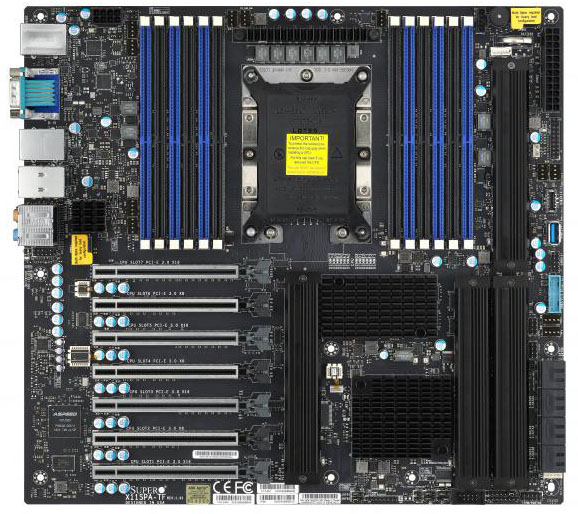
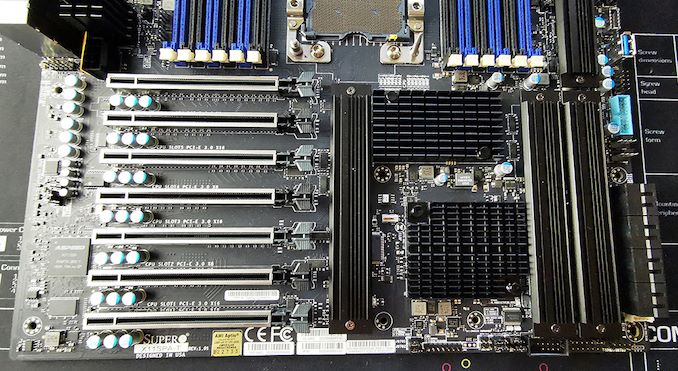
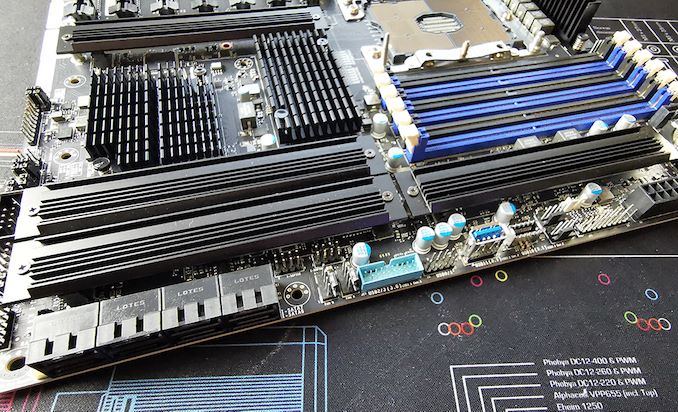

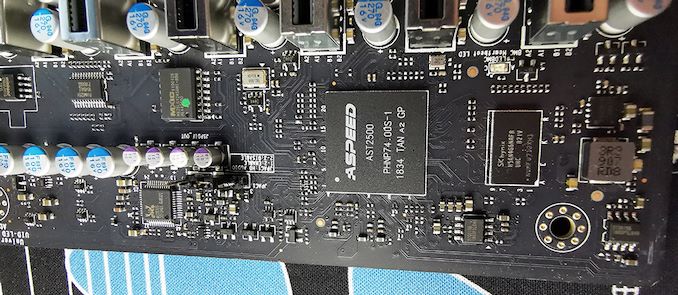
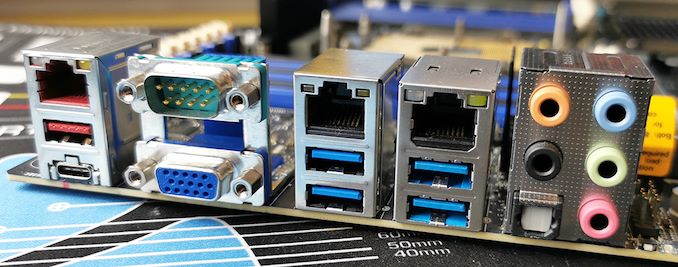
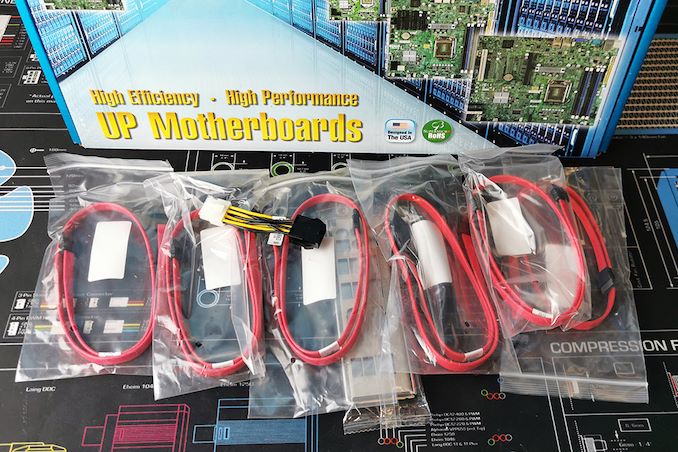








31 Comments
View All Comments
Tomatotech - Saturday, January 25, 2020 - link
I don’t have prices to hand but there has been discussion that the Mac Pro is competitively priced compared to buying the same parts yourself.As said above, if you want Apple, get the Mac Pro. If your time is valuable, get it pre-built with a support contract that probably costs an extra $5k+ (which is very worth it for commercial buyers).
I’d say only build this kind of system yourself if your time isn’t worth much - but then you wouldn’t be able to afford it - or if you have free support eg graduate students to farm it out to.
FunBunny2 - Saturday, January 25, 2020 - link
"I don’t have prices to hand but there has been discussion that the Mac Pro is competitively priced compared to buying the same parts yourself."That's always true; BigCorps buy in bulk and therefore at lower unit cost. There's a reason Amazon is killing local stores, and that's it. Trouble is, either consumers ignore the transport cost, or Amazon eats it. So far, it's mostly the latter. (e-tail will, in due time, devolve into supplying only low volume niche products that aren't profitable to stock locally.) Also, it turns out, in recent years most (i.e. more than 50%) of Amazon's turnover is from other vendors. Don't know how much Amazon's cut is, but the notion of 'central purchasing' beating on price might not be a given.
Death666Angel - Monday, January 27, 2020 - link
For some mid range configurations, the price is maybe okay. But you really should not upgrade the SSD or RAM at all via Apple, as far as I know, since the prices are steep. And the entry level is 5k for an 8 core, I believe?I stand by it, if you need MacOS, get Apple, otherwise why get a product that locks you into using Intel CPUs and AMD GPUs, both of which are not the be all end all these days in performance. Apple support also seems questionable with the Pro products, compared to other companies. Plus, if you don't need MacOS, chances are you need Windows or Linux and those don't run great (at all) on the Mac Pro.
And my "build it yourself" was not meant as a stict "get all the cheapest parts from 5 different vendors, then assemble it and test out all the edge cases". This isn't LTT. But not going with Apple allows you the freedom to check out all the classic workstation vendors and boutiques, look for the combination of CPU, GPU, RAM and storage that fits your needs with an OS and applications you actually use and then decide which brand you trust most and see who has competitive pricing.
peevee - Monday, January 27, 2020 - link
Is it the same company which has integrated Chinese spy chips on its boards?HoLiFuc - Wednesday, January 29, 2020 - link
That story was a whole lot of BS, is was already debunked already ages ago by Supermicro and other company's who where supposed to be affected.otherwise - Wednesday, February 26, 2020 - link
That was proven to be false. You might be thinking of Huawei which is still under sanctions for these claims.ender8282 - Monday, January 27, 2020 - link
Why no thread ripper comparisons?duploxxx - Thursday, January 30, 2020 - link
Because that would scratch half of the Intel benches from the graphHollyDOL - Tuesday, January 28, 2020 - link
Is it just me or is the board much more visually clean (layout wise, no rubbish etc.) than mainstream boards?Xajel - Tuesday, January 28, 2020 - link
I wish we see more mainstream workstation boards, things for Z390, X570 & TRX40 also...